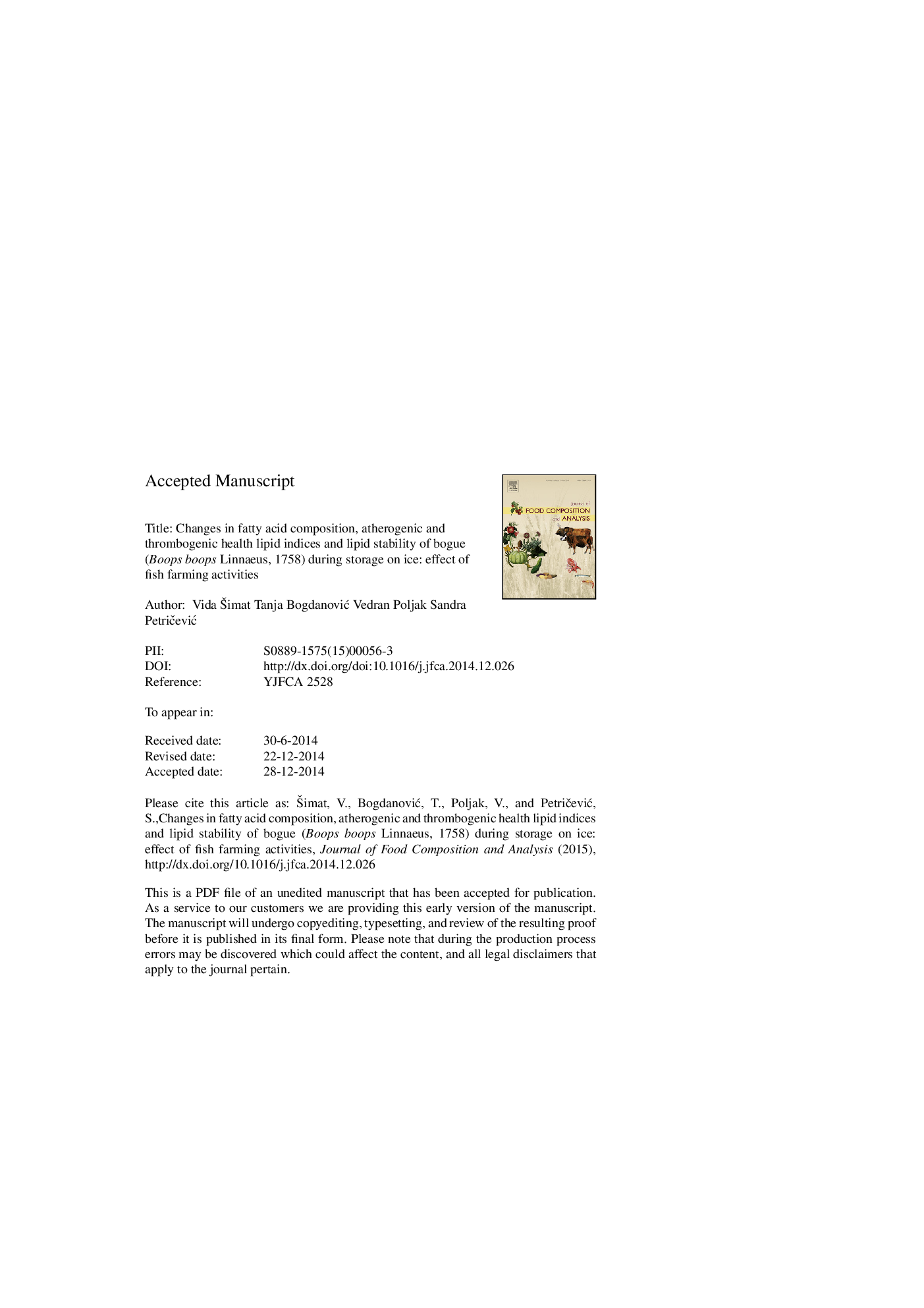| Article ID | Journal | Published Year | Pages | File Type |
|---|---|---|---|---|
| 7620533 | Journal of Food Composition and Analysis | 2015 | 22 Pages |
Abstract
In this study the fatty acid (FA) composition and lipid stability of wild and farm-affected wild bogues (Boops boops Linnaeus, 1758) during storage on ice were compared. The main saturated and unsaturated FAs were C16:0 and C18:1(n-9) in both bogue samples. Levels of eicosapentaenoic acid (EPA, 20:5n-3) and docosahexaenoic acid (DHA, 22:6n-3), and n-3/n-6 ratios, as well as atherogenic and thrombogenic indices, were significantly higher in wild samples. Over a period of 16 days on ice, the polyunsaturated fatty acids (PUFAs) were reduced by 9.4% in wild and by 11.7% in farm-affected wild bogues; however, lipid damage during storage on ice was low. The total free fatty acid content of wild and farm-affected wild bogues at three different stages during storage on ice was small, <3% over 16 days. Peroxide values changed from 1.05 to 5.73 and from 2.98 to 5.25Â milliequivalents (meq)/kg of O2 in wild and farm-affected wild bogues, respectively, while thiobarbituric acid index stayed under 5Â mg of malondialdehyde/kg in all samples. This work provides important information about the effect of farming activities on changes in lipid and nutritive properties of fish oil from wild and farm-affected wild bogue.
Keywords
Related Topics
Physical Sciences and Engineering
Chemistry
Analytical Chemistry
Authors
Vida Å imat, Tanja BogdanoviÄ, Vedran Poljak, Sandra PetriÄeviÄ,
